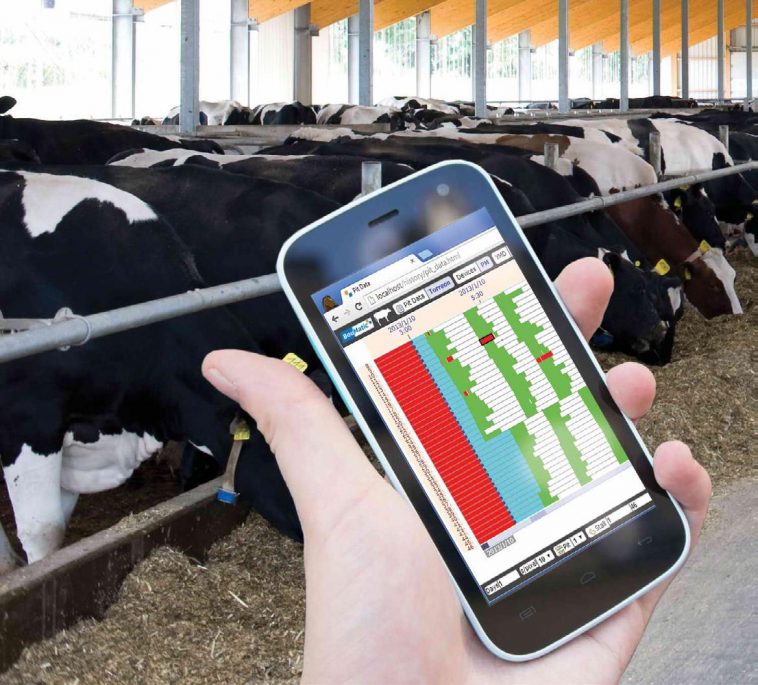Good old fashioned milk recording with pen and paper was inexpensive, but it was unreliable and brought about many problems. It also increased the workload when it had to be processed into meaningful information.
We are already deep into the age of microchips, scanners, large capacity, high-speed computer processors and cloud technology. Combined, these aids achieve wonders in the milking parlour.
Information on each cow can be transferred from the field to the end user without manual input. This includes sending information to the office on the farm, as well as forwarding the information to other parties such as advisors and cattle breeding associations. This can be achieved by using electronic identification discs in ear tags or on the cows’ hoofs, or implanted identification discs. These are used together with electronic registering devices in the milking parlour, the feeding troughs, or the hand-held type.
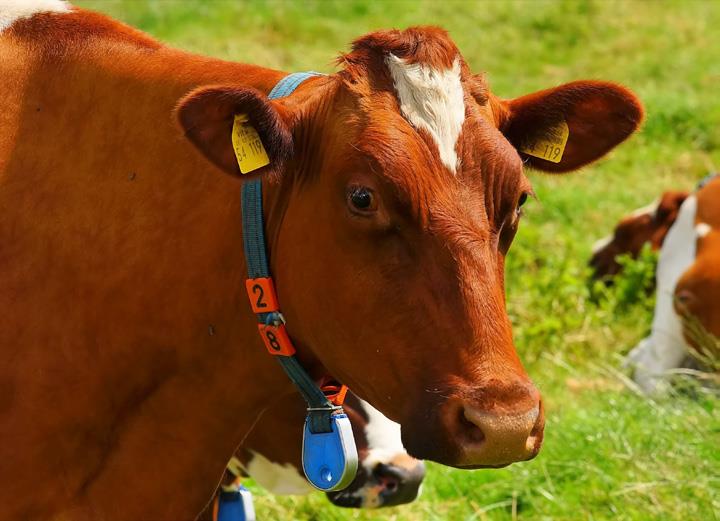
Picture 2: A sensitive sender fixed around the cow’s neck picks up any irregular actions and movements of the animal. (Image: Karsten Paulick, Pixabay)
Information on each cow can be stored in a computer. This method eliminates illegible ear tags, dirty, torn papers, and duplication of information. As soon as the electronic identification system is in place, together with registering devices and software packages combined with an e-mail system, the information path should be almost infallible. Such a system should however contribute to the dairy’s efficiency and should be profitable, as well as an investment in the future.
Various milking parlour and dairy management programmes are available, which will make the milk farmer’s task much easier, but it is important that the milk producer selects the correct programme/software that will suit his dairy best.
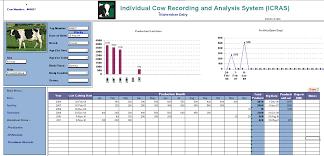
Picture 3: A computerised milk recording programme for small scale farmers. (Image: pdfs.semanticscholar.org)
Picture 4 shows an electronic identification system in the milking parlour where the cows wear the ID disc around their hoofs, and the registering devices are placed in specific positions in the milking crates to make the identification of the cows possible. By means of this system, each cow’s activities and production are stored in the computer – how much or how little she moved around since the last milking.
In this way it can be determined whether the cow is sick (mastitis) or on heat. A computer can arrange the cows in a herd in sequence of their milk yield. The identification of the cow that brings in the most income for the farmer – with all factors considered – is a function that is more important to the milk producer. It gives farmers much better control over their dairies than in the past. The knowledge that every incident is stored and forwarded to third parties, as well as the knowledge of the cows’ milk production and milk quality, gives the milk producers the opportunity to give more attention to finer points of their business (Dunn, 1999).
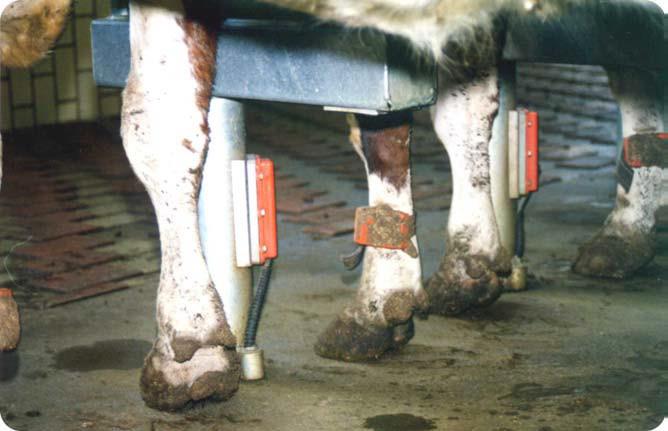
Picture 4: An electronic identification system in the milking parlour.
Feeding systems
The technology of feeding cows has changed drastically over the past few years and these changes will continue. Much advancement has been made in the insight into digestive physiology and fodder utilisation, but important advancement was also made in the ability to provide thoroughly balanced rations to the right cow at the right time.
The term “feeding system” had a completely different meaning twenty or thirty years ago. At that stage, a feeding system consisted of a conveyor belt or lift mechanism that provided fodder without physical handling by an operator. There was however no concept of computerised feeding systems, and “total mixed ration” (TMR) technology was very elementary (Perkins, 1990).
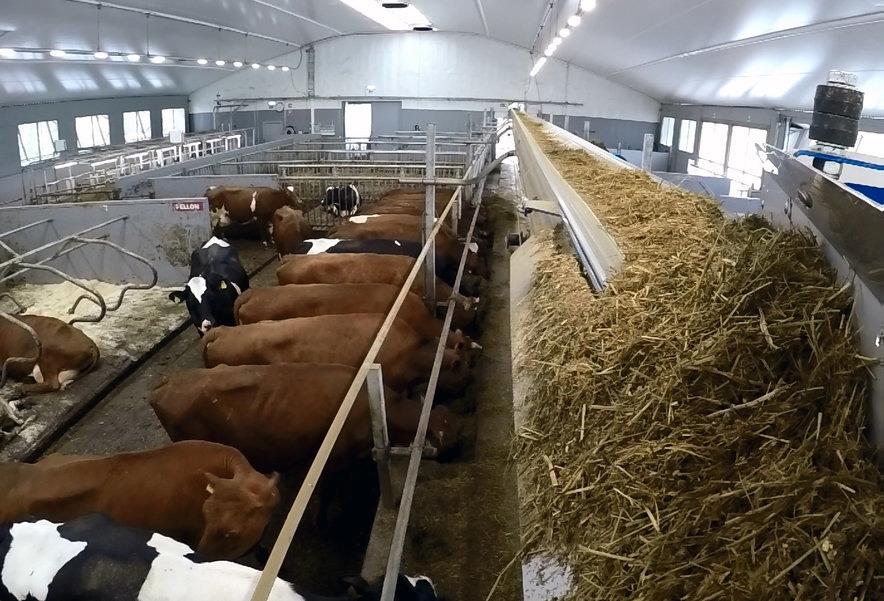
Picture 5: A mechanised feeding system reduces manual labour. (Image: Pellon.fi)
The requirements to which a feeding system should comply are becoming more and more complex, as the concept of feeding systems is broadening, and more knowledge is gained. It is no longer sufficient to provide cows with the correct quantity of fodder over a 24-hour period. The feeding strategy must be planned throughout the day to provide for the varying digestibility of fibre, carbohydrates, and protein fractions.
When a dairy farmer considers the changes in his feeding system, the first question that must be studied is: What is the current system? What shortages are there in the system? Does it take too long to feed the cows, or is the system past its lifetime, or is the farmer interested in buying new technology to upgrade his system?
The answers to these questions will determine the scope of the expected change in production of the cows. A dairy farmer who switches over from a feeding programme consisting of the provision of silage in the morning and afternoon and grain twice a day, to a TMR programme, will see a great change in milk production. It means that it only adds computerised feeding stations to an already sufficient system. This envisaged change in milk production must be considered when cash flow projections are made (Perkins, 1990).
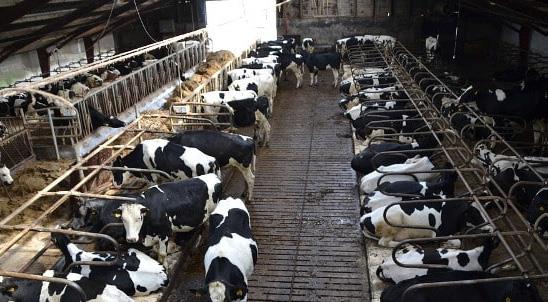
Picture 6: A post milking feeding system solves many problems. (Image: Agrifarming.in)
Post-feeding unit
A post-feeding unit is used for feeding cows after milking. The most important reasons why some farmers are moving away from the method of feeding in the parlour are the following:
- Where cows are fed according to production, the quantity of fodder the cow receives is so large that she cannot consume all of it during milking time. Therefore, if feeding is done during milking, milking time will be longer, or the cows will eat less, and this will lead to production losses.
- By feeding outside the milking parlour, the shed is free of dust and the animals are calmer because there is less movement.
- Milking time is shorter, with no production loss.
- With good planning, the material costs and construction costs of a milking parlour with a post-feeding unit will not necessarily be more than a milk shed equipped with troughs.
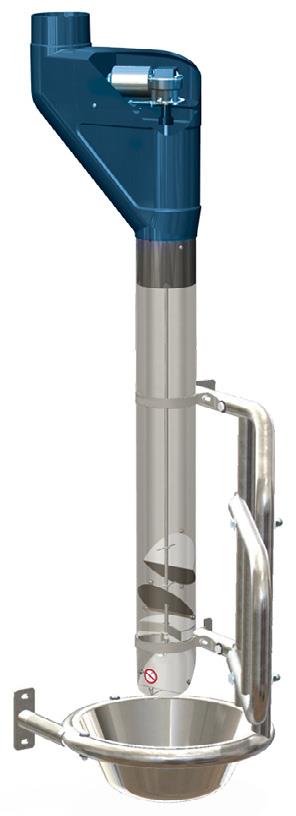
Picture 7: Modern feeding systems are automated and deliver just the right portion to every individual cow, according to her needs. (Image: Milkline.com)
As mentioned, the post-feeding unit must be designed for a specific situation. When milking is done in a herringbone parlour with a swing-over system, a post-feeding unit will consist of three rows of troughs. The milking time in the parlour is approximately seven minutes per group of cows. By using three rows of troughs, three groups can be accommodated, and each group has 21 minutes for feeding, which is sufficient.
If a herringbone parlour with a fixed-point system is planned, a post-feeding system with four rows of troughs will be necessary (2 x 2). The milking time in this type of parlour is approximately ten minutes per group. For each side of the parlour there are two rows of troughs, which means that the cows get 20 minutes feeding time.
In other parlours such as the tandem type, a post-feeding system can also be used. The milking time must however be determined every time, so that the post-feeding unit can be planned according to that information. For a double four-point tandem with four points on each side, three rows of eight troughs each will be a sufficient post-feeding unit.
In a tandem parlour, the milking time per point per cow is about 6,5 to 7 minutes. The first eight cows that have been milked use the troughs first, the following eight the next row and the next eight the last row. The feeding time will be about 19,5 to 21 minutes, which is sufficient.
A post-feeding unit consists of a roofed space with feeding troughs and a concrete floor. To make the handling of cows easier during adverse weather conditions, a crush with a neck clamp is usually affixed under the same roof. Note that the movement direction of the cows between the post-feeding unit and the crush is opposite. This is necessary so that the cows do not associate them with each other. If a cow is injured in the crush and the movement direction is the same as the post-feeding unit, she will be afraid of the post-feeding unit and will refuse to eat again.
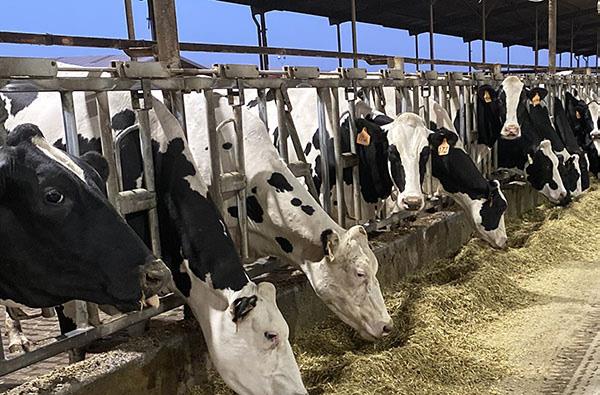
Picture 8: Cows feeding on their rations in a post-milking feeding system. (Image: cms-static.wehaacdn.com)
The floor of the post-feeding unit must have a slope for easy cleaning with water. A high-pressure sprayer or a hose is usually used for this purpose. The site of the post-feeding unit in relation to the milking parlour is important. If possible, the post-feeding unit must be relatively close to the parlour and it must be visible from the office.
Feeding in a post-feeding unit is usually done on a group basis. Groups in the herd are identified by means of coloured ear tags. Each group receives a predetermined quantity of fodder calculated on a mass basis and is associated to the colour of the ear tags.
Shoulder-stand feeding troughs with lockable neck clamps can be used in the post-feeding unit. The same principle as for swing-over and fixed-point parlours apply here.
The lockable neck clamps that link together are determined by the size of the parlour. If it is an eight-point fixed-point parlour, four sets of eight troughs with a set of neck clamps will be needed. All the neck clamps of the set of eight are disconnected when the cows have finished eating. Sufficient standing space must be left behind the feeding cows to allow the cows that have finished feeding, to pass through behind those still feeding. The long feeding trough is divided into single troughs, so that each cow has her own feeding space to ensure individual feeding. Standing space is limited to 750 mm per cow.
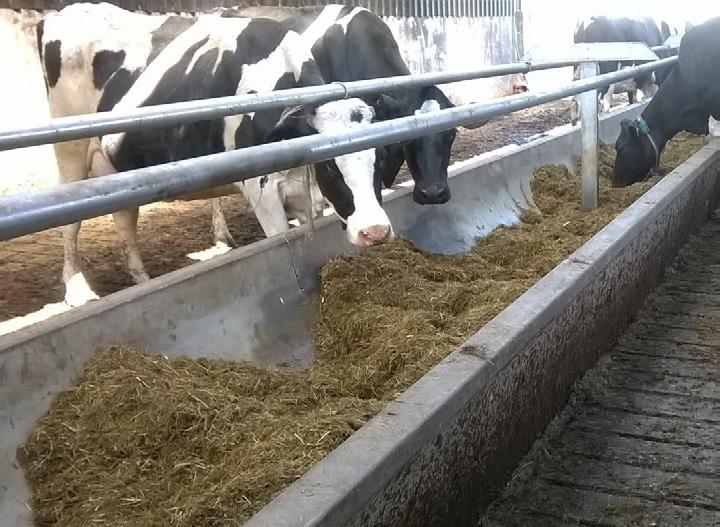
Picture 9: A sturdy concrete feeding trough. (Image: croomconcrete.co.uk)
In Southern Africa, concrete troughs are generally used, but stainless steel and plastic troughs are also available in the trade. The disadvantage of the latter is that they break easily and make a noise when the cows are feeding. Plastic and stainless-steel troughs must rather be installed in the milking parlour if in-crate feeding is done, as the position of these troughs can be adjusted.
The interiors of the concrete troughs must be finished off smoothly and not painted. Recommended concrete mixtures are one part cement to four parts sand, and for the upper layer, one part cement to three parts sand. Recommended heights for the troughs are 515 mm above floor level. In many cases, the back wall is built 1 300 mm high to prevent wastage.
Published with acknowledgement to the ARC Agricultural Engineering for the use of their manuals. Visit www.arc.agric.za for more information.

